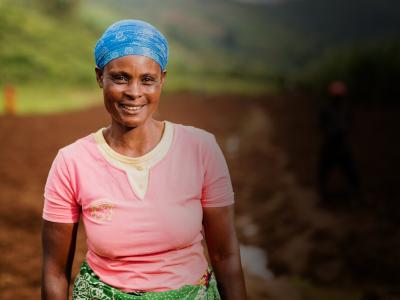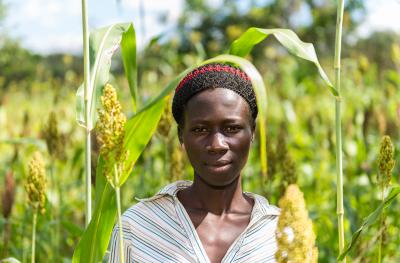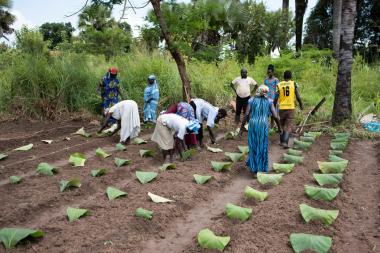
New Report on Women’s Resilience in Climate-Vulnerable and Conflict-Affected Communities
Cultivating a more enabling environment: Strengthening women’s resilience in climate-vulnerable and conflict-affected communities
Around the world, climate change crises and conflicts are on the rise, and it is women and girls who are disproportionately impacted. The most climate-vulnerable communities are also some of the most affected by conflict and economic insecurity; communities that have contributed the least to the climate crisis. This confluence of risk and vulnerability threatens the lives and livelihoods of communities – and especially women - caught in the middle.
A new report by Women for Women International elevates the perspectives and experiences of women survivors of war and conflict, highlighting the effects of extreme weather, environmental degradation, poverty, violence and conflict on their lives.
It also uncovers the frustrations shared by local Women’s Rights Organizations (WROs) with top down ‘green’ policies imposed by the international community that are insensitive to the scale of women’s daily struggle for survival in conflict settings.
Women for Women International, which has supported women survivors of conflict for over 30 years, produced this assessment based on surveys, focus group discussions, and interviews with nearly 1,000 women across 14 countries: Afghanistan, Burkina Faso, the Democratic Republic of the Congo, Iraq, Myanmar, Nigeria, Rwanda, South Sudan, Sudan, Mali, Myanmar, Syria, Ukraine, and Yemen.
Key findings in our Country Snapshots reveal trends in environmental impacts of climate change and conflict-related environmental degradation in Afghanistan, the Democratic Republic of the Congo, Iraq, Nigeria, Rwanda, and South Sudan including flooding, droughts, increasing severity and frequency of natural disasters, extreme heat, and pollution. Women surveyed cite the daily impacts of these trends, especially food insecurity, water scarcity, worsening health, the high cost of goods, and growing conflict among the many complex challenges they face.
Read our Country Snapshots in the full report.
Women are excluded from decision-making despite their unique perspective on impacts and existing commitment, creativity and leadership when it comes to drive forward solutions. This exclusion widens the gaps in conflict and gender-responsive programming and decision-making spaces regarding land, agriculture, and climate action.
For women already struggling to survive in contexts that are climate-vulnerable, affected by conflict, and gender-unequal, the issue of human-made, natural disasters and environmental degradation is one that must consider the daily realities of women.
In addition to key findings, Women for Women International’s new report proposes recommended actions - based on the direct inputs from women and WROs – for programming approaches, financing and funding, and participation and inclusion to ensure that justice and resilience are central to global climate action.
Read the full report and hear more from women bearing the greatest burden of climate change and environmental shocks on how to ensure they aren’t left out of climate solutions.



